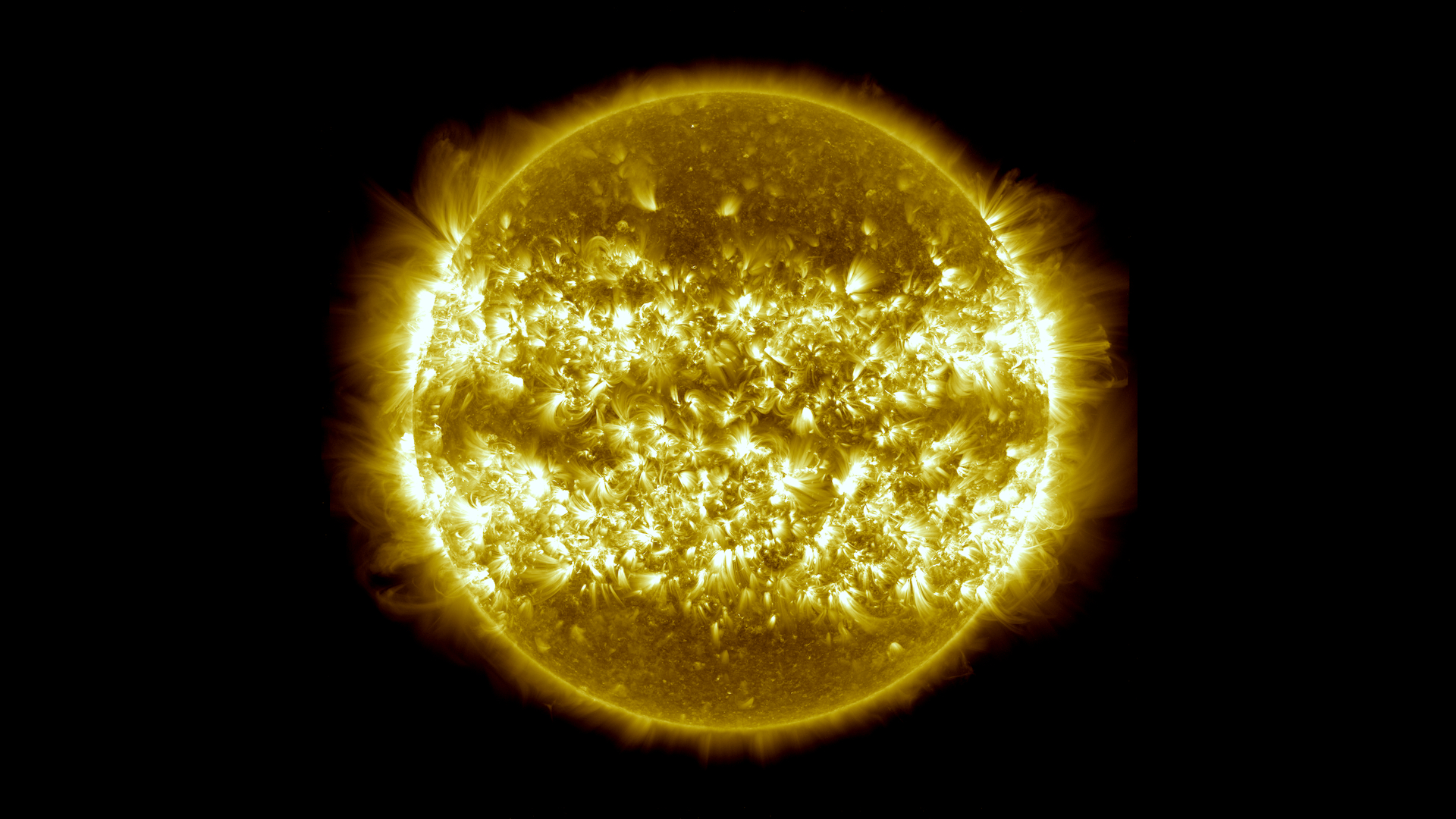1,000 Days Of The Sun
In the spring of 2010, NASA’s Solar Dynamics Observatory, or SDO, provided its first views of the sun. Since then the spacecraft has had virtually unbroken coverage of our star, capturing one image every 12 seconds in 10 different wavelengths. The collection of images chronicles the sun’s rise toward solar maximum, the peak of solar activity in its regular 11-year cycle. Repeatedly caught in the act were solar flares and coronal mass ejections, powerful eruptions that can send radiation and solar material toward Earth and interfere with satellite operations in space. SDO’s constant monitoring of the sun help scientists understand what causes these giant explosions—with the goal of someday improving our ability to predict this space weather. Watch the video to see a time-lapse sequence of SDO observations that spans three years in the life of the sun.

See three years of solar activity in three minutes.
This video, assembled from SDO images, shows three years in the life of the sun at a pace of two images per day.
Learn more by watching this narrated video, which includes expert commentary about SDO’s observations of the sun.

Bright regions indicate solar activity, common near the equator, in this composite of 25 SDO images taken from April 2012 to April 2013.

Twice a year for three weeks, the moon’s orbit sweeps between SDO and the sun, offering daily views of a solar eclipse.

In 2012, SDO captured images of Venus (black dot) crossing in front of the sun.

This solar flare (upper right), which took place on Aug. 9, 2011, was the largest flare so far this solar cycle, classified as an X6.9.
For More Information
See NASA.gov
Credits
Please give credit for this item to:
NASA's Goddard Space Flight Center
-
Video editor
- Scott Wiessinger (USRA)
-
Producer
- Scott Wiessinger (USRA)
-
Scientist
- C. Alex Young (ADNET Systems, Inc.)
-
Writer
- Karen Fox (ADNET Systems, Inc.)
Release date
This page was originally published on Tuesday, June 11, 2013.
This page was last updated on Wednesday, May 3, 2023 at 1:52 PM EDT.
